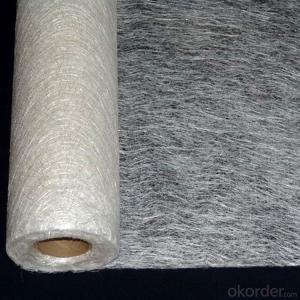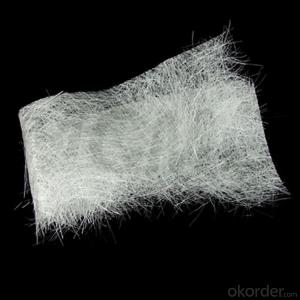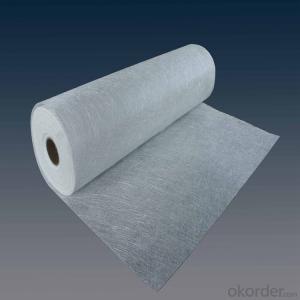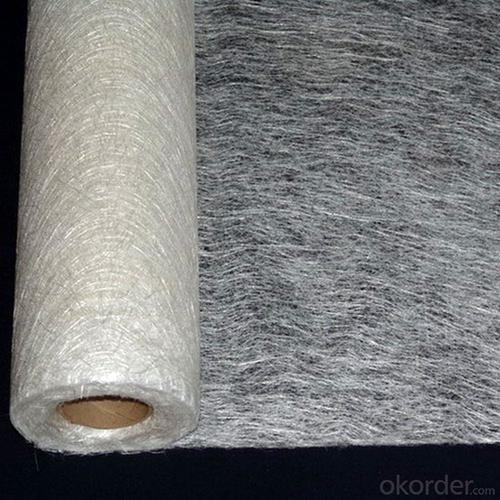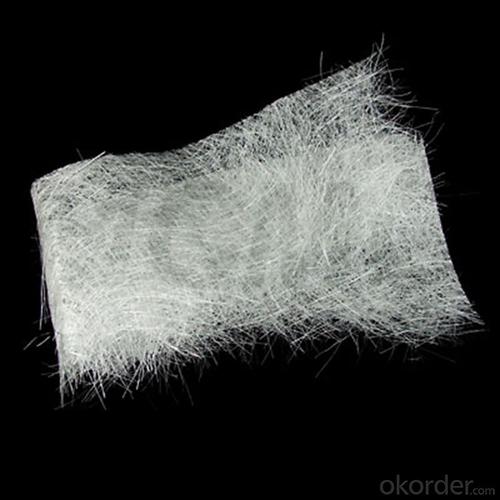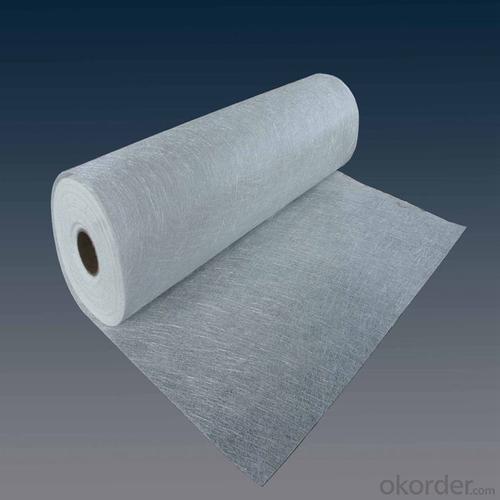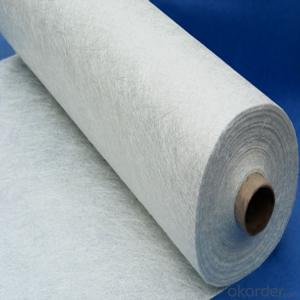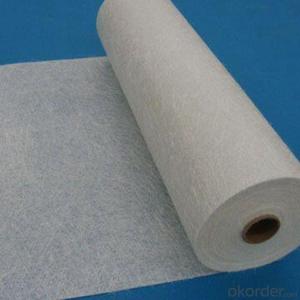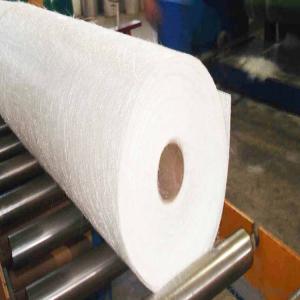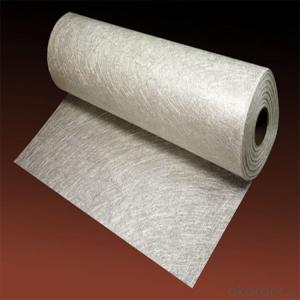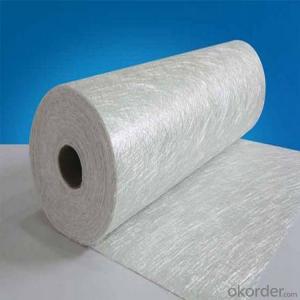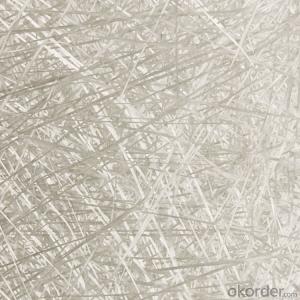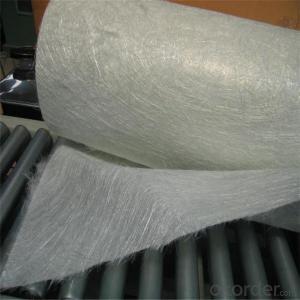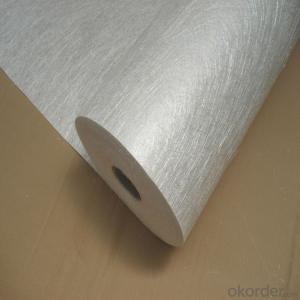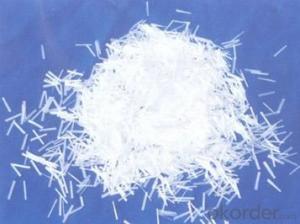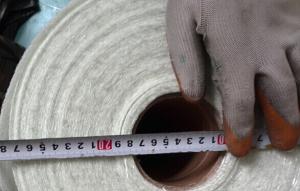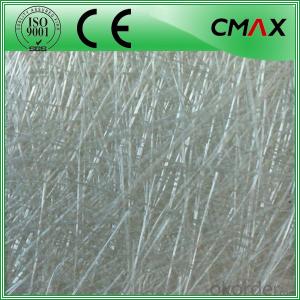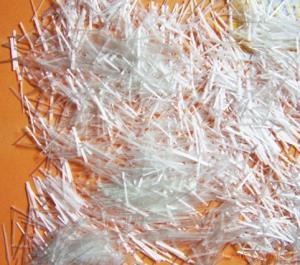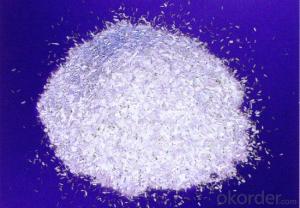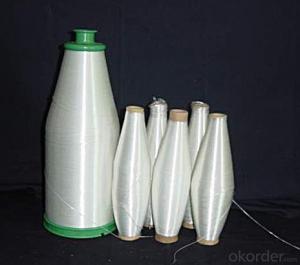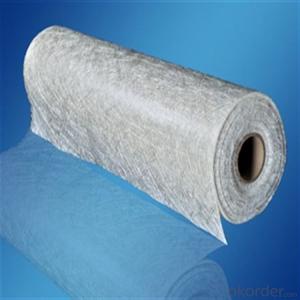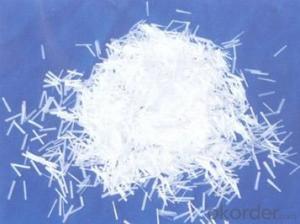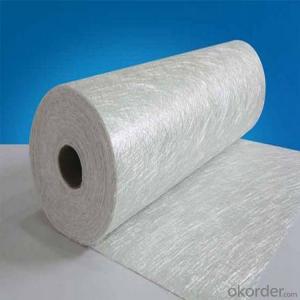AR Fiberglass Chopped Strands Mat
- Loading Port:
- China main port
- Payment Terms:
- TT OR LC
- Min Order Qty:
- 1 kg
- Supply Capability:
- 5000 kg/month
OKorder Service Pledge
OKorder Financial Service
You Might Also Like
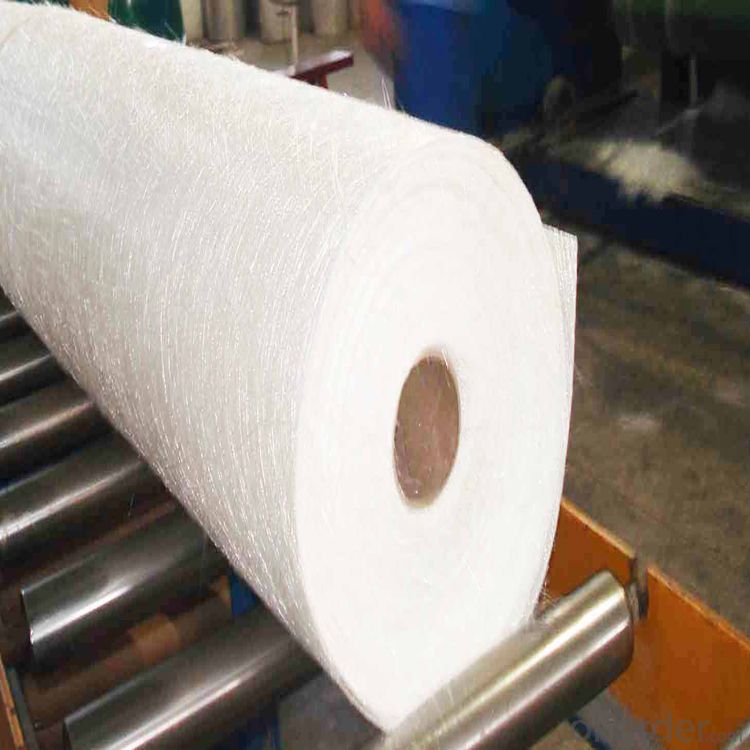
Product Description:
Fiberglass Chopped Strand Mat is fine strand reinforcement material made from E-glass cut fibers laid in a random pattern and bonded with powder or emulsion binder.
It is easy to handle and has excellent moulding performance.
Also, it has rapid resin penetration together with a fast strand wet out time.
The mat also brings a highly translucent finished laminates.
Also,the fine strand input makes the fiber prominence at the finished laminates surface extremely low.
Features
1.Excellent weight uniformity
2.Fast wet out
3.Easy air release
4.Excellent transparency of finished products
5.Excellent laminate
6.Low resin consumption
Application
1.Translucent roof panel
2.chemical storage tanks
3.FRP pipes
4.Boat hulls
5.Decks
6.Truck body panel
7.Cooling towers
8.Corrosion resistand
Specifications:
Item | Over Density | Moisture Content | Chop Density | Polyester Yarn | Width |
(g/m2) | (%) | (g/m2) | (g/m2) | (mm) | |
EMK300 | 309.5 | ≤0.15 | 300 | 9.5 | 50-3300 |
EMK380 | 399 | 380 | 19 | ||
EMK450 | 459.5 | 450 | 9.5 | ||
EMK450 | 469 | 450 | 19 | ||
EMC0020 | 620.9 | 601.9 | 19 | ||
EMC0030 | 909.5 | 900 | 9.5 |
Special products are available according to customer’s requirement.
Product Packaging:
Each Surface Tissue is wound onto a paper tube which has an inside diameter of 76mm and the mat roll has a diameter of 330mm. The mat roll is wrapped up with plastic film,and then packed in a cardboard box or wrapped up with kraft paper. The rolls can be vertically or horizontally placed. For transportation, the rolls can be loaded into a cantainer directly or on pallets.
Quantity
20'GP Container:About 10000kgs
40'HP Container:Aboout 23100kgs
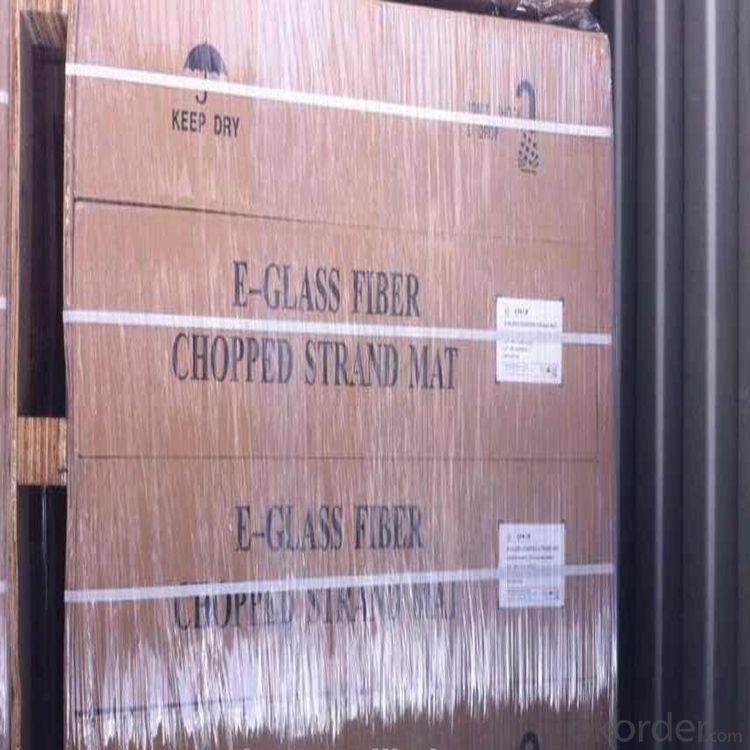
Product Storage:
Unless otherwise specified, Chopped Strand Mat should be stored in a dry, cool and rain-proof area. It is recommended that the room temperature and humidity should be always maintained at 15℃~35℃ and 50%~75% respectively.
Company Information
CNBM (China National Building Material) Group is the largest comprehensive building materials group in China that in integrate scientific research, manufacturing and logistics into one entity. The largest building materials and equipment specialists in China. Upon State Council approval, today CNBM owned more than 300 subordinate manufacturing factories and servicing companies. There are 6 fully owned public listed companies and 11 partially owned with substantial shares public listed companies. In many of these fields, CNBM is playing the leading role in the building industry in the country.
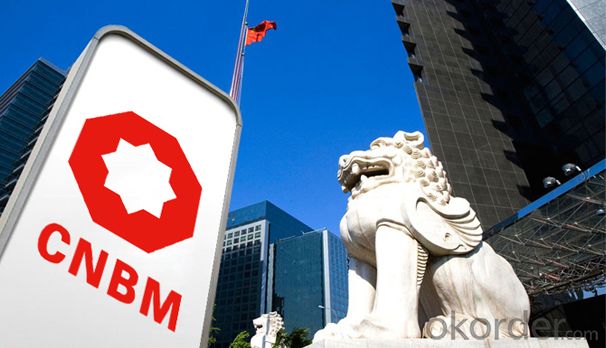
Our Service:
1.Any inquiry will be replied within 24 hours.
2.Professional manufacturer.
1) Print logo in the products;
2) The size and specification can be produce and design according to your demand.
3.High quality,fashion designs,reasonable and competitive price,fast lead time.
4.After-sale service
1) All products will have been strictly quality check in house before packing.
2) All products will be well packed before shipping.
3) All our products have 10 years rot resistance.
5.Faster delivery:sample order in stock,and 15-20 days for bulk production.
6.Payment:you can pay for the order via:T/T,Western Union,MoneyGram,L/C etc.
FAQ:
which kind of glass fiber sample and materials can you provide?
We can provide the glass fiber and glass fiber down stream products samples of E glass, C glass, ECR glass, High alkali glass. The products includes single end roving, assembled roving for different applications( Piping, SMC, panel, winding mill plate) , chop strand for BMC, engineering plastic (PA, PPA, PPT, POM, etc), chop strand mat (from 100gsm-900gsm) for automobile and water tank, etc, woven roving (270gsm-800gsm), surface tissue (25-50gsm), multi-axial fabric of different unit weight.
- Q: What are the flexural strength properties of fiberglass chopped strand?
- The flexural strength properties of fiberglass chopped strand are characterized by its ability to withstand bending forces without breaking or deforming. It exhibits high tensile strength and stiffness, making it suitable for applications where structural integrity under flexural stress is crucial. Additionally, fiberglass chopped strand offers excellent fatigue resistance, thermal stability, and dimensional stability, making it a popular choice in industries such as automotive, construction, and aerospace.
- Q: What are the electrical conductivity properties of fiberglass chopped strand?
- Fiberglass chopped strand has low electrical conductivity properties due to the insulating nature of the glass fibers.
- Q: What are the advantages of using fiberglass chopped strand?
- Using fiberglass chopped strand in various applications has several advantages. Firstly, it offers excellent strength and durability, with highly resistant strands that can withstand high levels of stress and strain. This makes it suitable for products and structures requiring strength, such as automobile parts, boat hulls, and pipes. Secondly, fiberglass chopped strand is lightweight, making it easier to handle and transport. Compared to materials like steel or aluminum, fiberglass is significantly lighter, contributing to improved fuel efficiency in industries like automotive and aerospace. Furthermore, fiberglass chopped strand is highly resistant to corrosion. Unlike metals that rust or corrode, fiberglass is impervious to water, chemicals, and other corrosive substances. This makes it ideal for applications exposed to harsh environmental conditions or chemicals, such as chemical storage tanks or offshore oil platforms. Another advantage is its versatility. Fiberglass can be molded into various shapes and combined with other materials, allowing for intricate designs and customization. This makes it suitable for a wide range of industries and applications, from construction to electronics. Lastly, fiberglass chopped strand is an affordable option. Compared to materials like carbon fiber, fiberglass is generally more cost-effective while still offering a good balance between cost and performance. In summary, the advantages of using fiberglass chopped strand include its strength and durability, lightweight nature, corrosion resistance, versatility, and affordability. These qualities make it a preferred material in various industries, providing numerous benefits to manufacturers and end-users.
- Q: How does the flexibility of fiberglass chopped strand affect its handling and processing?
- The handling and processing capabilities of fiberglass chopped strand are directly influenced by its flexibility. This characteristic allows fiberglass chopped strand to be easily integrated and dispersed into different resin systems, making it an ideal material for composite applications. This flexibility ensures that the chopped strand is evenly distributed throughout the resin matrix, resulting in improved overall performance and mechanical properties of the final product. Additionally, the flexibility of fiberglass chopped strand plays a crucial role in its ease of use during manufacturing processes. It can be effortlessly poured, sprayed, or molded into various shapes and forms, making it highly adaptable to different production techniques. The flexibility also assists in achieving consistent coverage and reinforcement within the resin matrix, leading to enhanced strength and durability of the composite material. Furthermore, the flexible nature of fiberglass chopped strand allows it to conform to intricate shapes and contours, making it a suitable choice for applications that require complex designs. It can be easily oriented and shaped to meet specific requirements, facilitating the production of customized products. In conclusion, the flexibility of fiberglass chopped strand significantly enhances its handling and processing properties, making it a preferred option for industries such as automotive, aerospace, construction, and marine.
- Q: How is the abrasion resistance of fiberglass chopped strand composites tested?
- The abrasion resistance of fiberglass chopped strand composites is typically tested using standardized methods such as ASTM D4060 or Taber Abrasion Test. These tests involve subjecting the composite material to abrasive wear by rubbing it against a specified abrasive material under controlled conditions. In the ASTM D4060 test, a rotating wheel with a specific abrasive material is pressed against the surface of the composite sample. The wheel applies a predetermined load and moves in a circular path, causing abrasion on the sample. The test is performed for a specified number of cycles or until a certain level of wear is achieved. The weight loss or change in appearance of the sample is then measured to determine its abrasion resistance. Similarly, the Taber Abrasion Test utilizes a specialized machine that applies a specific type and level of abrasion to the composite material. The sample is mounted on a rotating turntable, and abrasive wheels or disks are pressed against the sample surface while it rotates. The test is performed for a specified number of cycles, and the weight loss or change in appearance of the sample is measured to evaluate its abrasion resistance. Both methods provide quantitative data on the abrasion resistance of fiberglass chopped strand composites, allowing manufacturers and researchers to assess the material's durability and suitability for various applications. These tests help in designing and selecting materials that can withstand wear and provide long-lasting performance in environments where abrasion is a concern, such as automotive components, marine applications, or industrial equipment.
- Q: Is fiberglass chopped strand available in different colors?
- Typically, different colors of fiberglass chopped strand are not available. The strands are commonly found in white or off-white hues. Nevertheless, when these chopped strands are combined with a resin or utilized in a composite material, pigments or dyes can be used to achieve the desired color.
- Q: What are the typical curing conditions for fiberglass chopped strand composites?
- The typical curing conditions for fiberglass chopped strand composites may vary depending on the specific application and desired properties. However, there are some common factors that are typically considered during the curing process. Firstly, temperature plays a crucial role in the curing of fiberglass chopped strand composites. Generally, the curing temperature ranges from 100°C to 180°C (212°F to 356°F). This temperature range allows for the effective activation of the resin matrix, leading to the desired strength and durability of the composite material. The curing time is another important factor. The duration of the curing process is influenced by various factors such as the type of resin used, the thickness of the composite, and the desired properties. Typically, the curing time may range from a few minutes to several hours. It is essential to ensure that the composite is exposed to the curing conditions for the appropriate amount of time to achieve optimal results. Pressure is also considered during the curing process. Applying pressure to the fiberglass chopped strand composite helps in improving the consolidation of the material, reducing voids, and enhancing the overall mechanical properties. The pressure applied can range from a few psi (pounds per square inch) to several hundred psi, depending on the specific requirements. Furthermore, the use of catalysts or accelerators may be necessary to speed up the curing process. These additives help in reducing the curing time and enhancing the overall efficiency of the process. It is worth mentioning that curing conditions may vary depending on the specific resin system used, the desired properties, and the manufacturing process. Therefore, it is important to refer to the manufacturer's recommendations and guidelines to determine the optimal curing conditions for a particular fiberglass chopped strand composite application.
- Q: How does the size of fiberglass chopped strand affect its performance?
- The performance of fiberglass chopped strand can be significantly influenced by its size. Generally, larger chopped strands contribute to increased strength and stiffness in the final composite material. This is because longer strands provide more opportunities for interlocking and bonding with the resin matrix, resulting in a stronger overall structure. On the contrary, smaller chopped strands enhance the surface finish and flowability of the resin during the manufacturing process. They can easily fill intricate molds and complex shapes, resulting in a smoother surface. Smaller strands also have better wetting properties, ensuring better adhesion between the fibers and the resin matrix. However, it is worth noting that the optimal size of chopped strand depends on the specific application and the desired properties of the final product. For instance, in applications where high strength is crucial, such as in structural components, longer strands are preferred. Conversely, in applications where surface finish and aesthetics are important, smaller strands are more suitable. In conclusion, the size of fiberglass chopped strand plays a vital role in determining its performance characteristics. Choosing the appropriate size is essential to achieve the desired mechanical properties, surface finish, and overall performance of the composite material.
- Q: What are the typical mechanical properties of fiberglass chopped strand composites?
- Fiberglass chopped strand composites possess several typical mechanical properties, including high strength, stiffness, and dimensional stability. These composites demonstrate outstanding tensile, flexural, and impact strength, rendering them suitable for a wide range of structural applications. Moreover, their high modulus of elasticity ensures exceptional resistance to deformation when subjected to external forces. In addition, these composites have a low density, making them lightweight and perfect for applications that prioritize weight reduction. Furthermore, fiberglass chopped strand composites display excellent fatigue resistance, enabling them to endure repeated loading without significant performance deterioration. Overall, the mechanical properties of fiberglass chopped strand composites make them a versatile material option across various industries such as automotive, aerospace, construction, and marine.
- Q: Can fiberglass chopped strand be used in construction applications?
- Yes, fiberglass chopped strand can be used in construction applications. It is commonly used in the manufacturing of various construction materials such as insulation, roofing, pipes, and panels. The chopped strands are mixed with resins and binders to create strong and durable composite materials that are lightweight, corrosion-resistant, and have excellent thermal and sound insulation properties.
Send your message to us
AR Fiberglass Chopped Strands Mat
- Loading Port:
- China main port
- Payment Terms:
- TT OR LC
- Min Order Qty:
- 1 kg
- Supply Capability:
- 5000 kg/month
OKorder Service Pledge
OKorder Financial Service
Similar products
Hot products
Hot Searches
Related keywords
